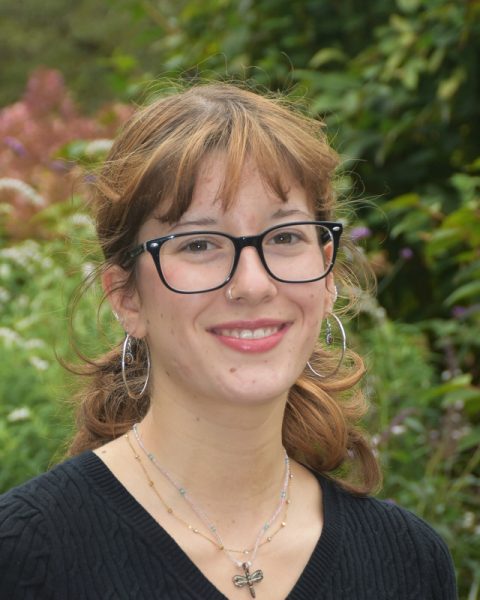
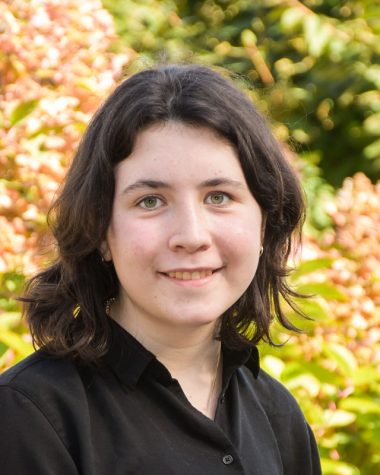
Photo illustration of a student doodling during class, which some teachers allow but some ban.
December 7, 2021
Students around the world struggle with learning disorders, including us.
This does not at all mean that those with learning disorders are not as smart or cannot accomplish the same things as a “neurotypical” person. It does mean, however, that mastery might take more work and time.
A school that cares deeply about accommodating diverse learning needs is immensely helpful to this process.
Of course, we realize that while our School is not suitable for students with all learning and behavior disorders, educators strive to accommodate students who submit professional documentation.
Fortunately, with its available and growing resources, our School focuses on accommodating diverse types of learners. It’s also clear that our teachers really believe that every student can succeed.
Still, even within the confines of what our School can offer to support students with learning differences (which is a lot), a few changes and clarifications could prove immensely helpful.
No matter the school, however, even here, students with Attention Deficit Hyperactivity Disorder (ADHD) tend to have a more difficult learning journey. We speak from experience. It’s more difficult for us to pay attention to lengthy discussions and work in class, regardless of the topic or discipline.
The current education system is not built for students who have focus issues but expects all students to learn the same.
ADHD can also provoke disorganization, boredom, and forgetfulness.
According to the American Psychiatric Association, “Symptoms of ADHD include inattention (not being able to keep focus), hyperactivity (excess movement that is not fitting to the setting) and impulsivity (hasty acts that occur in the moment without thought). “
Furthermore, an estimated 8.4 percent of children and 2.5 percent of adults have ADHD.
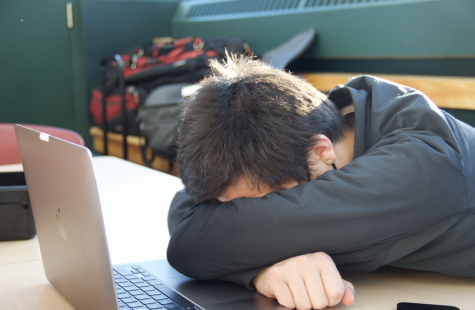
We suggest that the School consider a later start time, which studies show proves especially helpful to students with ADHD.
According to Children and Adults with Attention-Deficit/Hyperactivity Disorder (CHADD), all teens need between eight and ten hours of sleep, but this is especially important for students with ADHD.
“Being sleepy impairs a person’s mood, the ability to make good decisions, reaction times, memory, and executive function,” according to CHADD. “When a teen also has ADHD, that lack of sleep will make ADHD symptoms worse.”
Here, Zimmerman has done much better than at her previous school. However, test-taking is still a barrier to her learning experience—especially with she lacks enough sleep.
Tests or assignments that require students with ADHD to sit down and regurgitate large amounts of data are excruciating and unhelpful to the learning. While this could highlight the strengths of some students, it does not accurately represent our knowledge.
When Zimmerman is asked to sit down and write “to eat” in French, she blanks, even though she had it memorized that morning.
Zimmerman has also found it hard to concentrate on what the teacher is saying at some points during class.
Here, some teachers restrict doodling, gum, and fidget devices. Unfortunately, the Student Handbook doesn’t clarify any rules or guidance here.
Some teachers enforce no gum chewing outside of test-taking. Zimmerman wonders why gum chewing only helps students focus during tests and not during other times.
The truth is that gum chewing helps students like her focus under any conditions. It allows her to pay better attention in class and properly absorb information. Zimmerman feels strongly that it can be hard to be spoken to by someone about ADHD who doesn’t have the same challenge but still thinks they know what’s best for her. At the very least, teachers need to listen and be empathic.
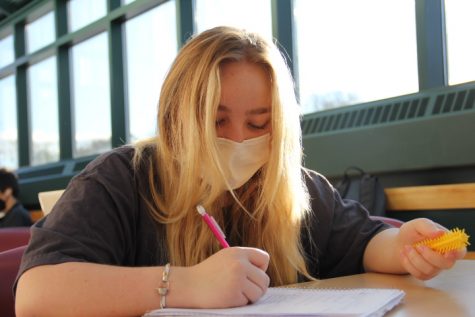
Take if from Dean of Upper School Students Paul Murray, who adapts his classroom to fit the needs of all students.
“I have no problem with a student using a fidget or doodling,” Murray said. “Now that chewing gum is allowed in school, I fully encourage chewing gum. Having neurodiverse students in my class hasn’t changed the way I teach.”
Head of Academic Services Karen Bernanke is especially familiar with the learning styles of neurodiverse students.
“We have a number of neurodiverse students at Brimmer and many with ADHD, which is the norm in all school populations,” Bernake said. I agree that not all students should have fidgets, and this decision is based on a general misuse of fidget tools. However, some students have specific accommodations and will be allowed access to individualized fidget tools with approval from Academic Support.”
Bernanke is very eager about the growth of the Learning Center this year.
“I am happy that the Learning Center is becoming more of an academic hub where students, faculty, and tutors can connect, and where materials such as folders, notebooks, highlighters, graph paper, and resource books are stored,” Bernanke said. “I would like to see the Learning Center continue to grow as a resource center for all students and to develop a learning library on neurodiversity in the coming years.”
Murray says that teachers here are well aware of different kinds of learners.
“It’s your job as a teacher to design lessons and have multiple approaches that can help all students,” he said.
Many students cannot do their best in a typical learning environment and need additional resources to help them succeed.
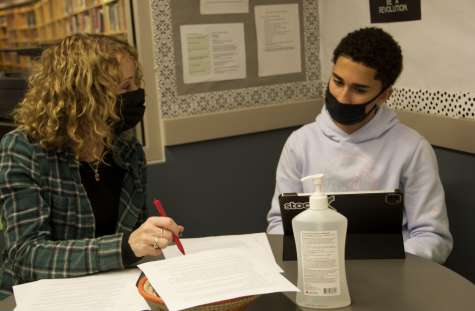
“Traditional learning methods that are taught in most schools have not typically worked with my brain,” Eleanor Reyelt ’23 said. “The current education system is not built for students with neurodiversity, but I have now grown to adapt to these ways of teaching through the years. Generally, Brimmer has been extremely supportive, but it has also at times been through advocating and standing up for myself and my needs as a learner.”
Learning resources available to Upper School students include the library, the Math Lab, and Writing Center. Students also enjoy study halls, teacher office hours, and interactive class discussions.
Zimmerman has noticed increased traffic to the Writing Center, where students can get help focusing on ideas and honing prose. Like always, the Math Lab is buzzing, but especially so this year. Of course, it’s important to note that all types of students, not just those with learning disabilities, use these services. Still, the School should get credit for addressing the higher volume.
“There are definitely some challenges presented by the school,” Eli Lewis ’25, who struggles with ADHD, said. “One of the largest ones is the 70-minute blocks. I work the most efficiently for only about 40 minutes before I start to deteriorate. We are allowed to take a break at that time, but it doesn’t help much.”
Lewis appreciates the library.
“I always find it hard to focus in a study hall room, but the library is much easier to focus in because of the reduced noise and comfier seats,” Lewis said. “Besides that, all the other ways I help myself focus are strategies I’ve discovered myself.”
A significant flaw within the learning community—not just here, but everywhere—is an emphasis on test-taking, combined with a misconception that throwing extra time at students with learning setbacks is the magic solution.
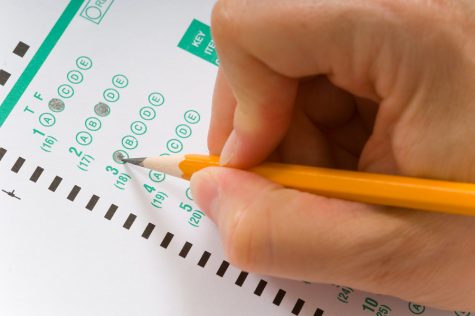
Tests, in general, are an antiquated way to quickly examine “knowledge” in an insignificant and unreliable manner. Moreover, extra time can only offer students more time to respond to questions, even if they do so halfheartedly and incorrectly. On this front, we appreciate the School’s efforts, however gradual, to move away from high-stakes testing. We are thankful for teachers who balance tests with more creative work.
“I think that over the past few years, we’ve changed a lot about assessments and that teachers are offering different types of assessments,” Upper School Head Joshua Neudel said.
“No teachers are offering only one type of way, which would allow students to show what they know. A big thing that’s different about private schools is that teachers aren’t required to give an exam at the end of the semester. Instead, teachers focus on debates, presentations, and other creative projects.”
In Bowman’s experience, the School has been significantly more effective in accommodating her learning needs.
In public school until 8th grade, Bowman’s teachers prioritized success on standardized tests over meaningful learning. Many classes were taught at a very difficult speed, and teachers didn’t care if students were absorbing all of the information.
The pandemic made school more difficult for everyone, but when Amelia had mostly online learning in 7th grade, she was very disappointed. Some teachers didn’t even show up to class, and those who did had ignored students and their needs. Bowman had several classes that just involved taking notes. Homework called for answering closed-ended questions.
That is why Bowman’s time here has been so refreshing. Students are met where they are, and many of the lessons are structured based on everyone’s needs—not just some. She also appreciates how the School values hands-on and experiential learning, such as projects and field trips over worksheets and online tests.
Bowman was so upset that she felt she needed to change schools, and she is very glad that she ended up here.
“Since we’re not tied wo the State standards of what the curriculum has to look like, teachers are able to to into their interests and don’t feel that students have to prepare for State tests,” Neudel said. “Our goal is that students want to learn and have a positive relationship with the School.”
This School is an all-inclusive environment where students of all capabilities can fully express themselves and learn. That much is clear. Still, to continue working toward improvement, Bowman and Zimmerman have several suggestions.
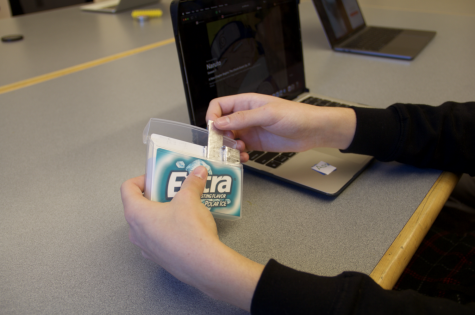
The School has made many policies that have improved our learning process as a whole. The current learning curriculum serves students with and without learning disabilities. Students aren’t looked at as just a body, but as individuals who are all equally important.
We want that the School to know how appreciative we are of its ongoing efforts to support diverse learners, even as we hope that the adults in our community take into account our heartfelt suggestions to continue improving and growing, which could help even more young people achieve their full potential.

